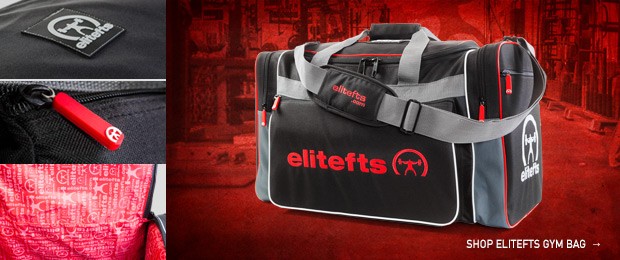
Sometimes the best way we can clean up our movement or our athlete’s movement isn’t by changing movement selection but by being exceptionally intentional in execution.
One of the reasons I see injury develop is a loss of position or control, especially towards the bottom end of a range of motion or most mechanically disadvantaged positions of a movement. Most athletes who rehab with me end up spending a good deal of time working on control through a very specific part in a range of motion, MOST often on the eccentric.
Our adult clients generally want a combination of three things:
- Be strong
- Improve durability
- Look better
As much as we separate our athletes into different categories, people generally want the same thing. They're just going about it in different ways with different tangible goals. End range eccentric control through the client’s functional training range is one of the single best ways you can guarantee reaching these three goals.
POPULAR: The Anti- Tin Man Romanian Deadlift
From a strength standpoint, controlling the bottom end of an eccentric significantly influences the subsequent rep's execution and positions. From a general durability standpoint, emphasizing control on the last portion of the eccentric is one of the biggest ways we can maintain appropriate joint stresses. From a hypertrophy (and looking better standpoint), 99 percent of us could stand to keep better control on tension for both a mechanical stimulus and improved execution on subsequent reps. This tension control from one rep to the next might make it harder to achieve more reps but provide a significant stimulus. When you’ve been training long enough, you start to realize that getting more out of less may be one of the best ways to preserve your longevity. Furthermore, getting a stimulus out of two sets of an exercise instead of four will be notably less wear and tear over time.
I’ve been prescribing more and more of what I call the “quiet” or “library” technique for my powerlifting, bodybuilding, and rehab clients. The major idea behind the technique is to have the weight touch the floor as controlled and quietly as possible. It’s not quite the same as a dead stop, where the force production needs to be regenerated every rep. Instead, you're maintaining what tension is already there to maintain positional control demands. While it sounds easy, the required tension control significantly amplifies the perceived effort, often requires weight scaling. It improves control through subsequent reps that targets end range strength, positional control for durability, and tension control for mechanical stimulus.
The beauty of this technique is that it can be applied to so many different movements with different purposes. Below I have video examples of friends and clients performing quiet technique and a quick snippet about implications and executions depending on the purpose.
1. Quiet T-Bar Row
Application: Rehab—positional control for relearning and position maintenance.
Context: I made this video for a client of mine who has low back pain with any and all squat and deadlift variations. When looking at her movements, her initiation in direction reversal OR breaking the floor always came from the low back, first. This not only altered her line of pull enough to keep major players (like glutes) at a mechanical disadvantage but clearly increased stress through her low back. The application here is on the intent of movement initiation. She was instructed to keep hips, low back, and core rigid, and the control of tension through the bottom end allowed her to proprioceptively “feel” to initiate from, rather than her low back. Tension can be a HUGE proprioceptive aid and a tremendous tool when regrooving patterns.
2. Quiet Trap Bar Deadlift
Application: Longevity, hypertrophy, and strength hybrid—tension control for subsequent rep execution, increased tension for mechanical stimulus without requiring extra weight.
Context: This is a friend of mine who started using the quiet technique on his trap bar deadlifts. He’d been following Ben Pollack and Justin Harris’s myoplasmic programming for a while and saw significant improvements in both size and strength. Applying the quiet technique on a deload/recalibration week allowed him to feel an incredible amount of tension (and time under tension maintenance) while requiring less overall load. If you can get a stimulus from four plates instead of six, you'll experience far less wear and tear on the joints, especially if it ticks the mechanical tension requirement for hypertrophy. There’s a lot to be set for recalibration weeks where technique and tension are the focus, allowing for increased load in subsequent weeks. Implementing a small technical cue on a recalibration week can potentiate improved training quality with regards to stimulus in following weeks.
3. Quiet Deadlift
Application: Hypertrophy via positional control—resetting position to maintain intent of erector stimulation.
Context: This is, literally, how I tell people NOT to deadlift (excessive active extension) for longevity, but with our transition from powerlifting to bodybuilding, my husband felt like he wanted to change his technique for hitting his erectors a little harder. His application of the quiet technique to increase tension demand AND maintain control to focus on his pull line allowed him to modify from his traditional powerlifting technique with some focus and concentration. His emphasis was on execution to prioritize a specific stressor via pull line, rather than moving from point A to point B as efficiently and technically advantaged as possible. The force generation requirement from a quiet position (similar to a soft dead stop) is higher than reversal of a weight that is already moving.
4. Quiet Deficit Pendlay Rows
Application: Hypertrophy—movement integrity through extended range (the deficit).
Context: For hypertrophy, range of motion (ROM) is king. While everyone wants to start implementing extended ROM exercises, for both safety AND tension (which is the other MAJOR requirement for hypertrophy), positional control is an absolutely mandatory pillar to build off of. Implementing the quiet technique here forces scrutiny of movement quality. It becomes very apparent very quickly if someone has the motor control, stability, strength, and anthropometrics to execute an extended range exercise. The amount of tension throughout an extended range is, in my opinion, arguably one of the best stimulus options you can have for a number of pulling movements.
There are a million and one ways to implement this technique. In addition to the exercises above, quiet dumbbell rows, trap bar rows, trap bar stiff leg deadlifts, and one arm barbell rows are some of my other favorites. My absolute favorite quality of the quiet technique is the fact that it has massive benefits for almost any population we can work with, or any goal we have, especially if a loss of eccentric control at end range is the weakest link in the movement. The implications for powerlifting, rehab, and bodybuilding are multidimensional in a way that ultimately builds control and resilience, allowing greater lifting longevity and subsequent long-term progress.
Header image credit: Nataliia Yakovenko © 123rf.com











1 Comment